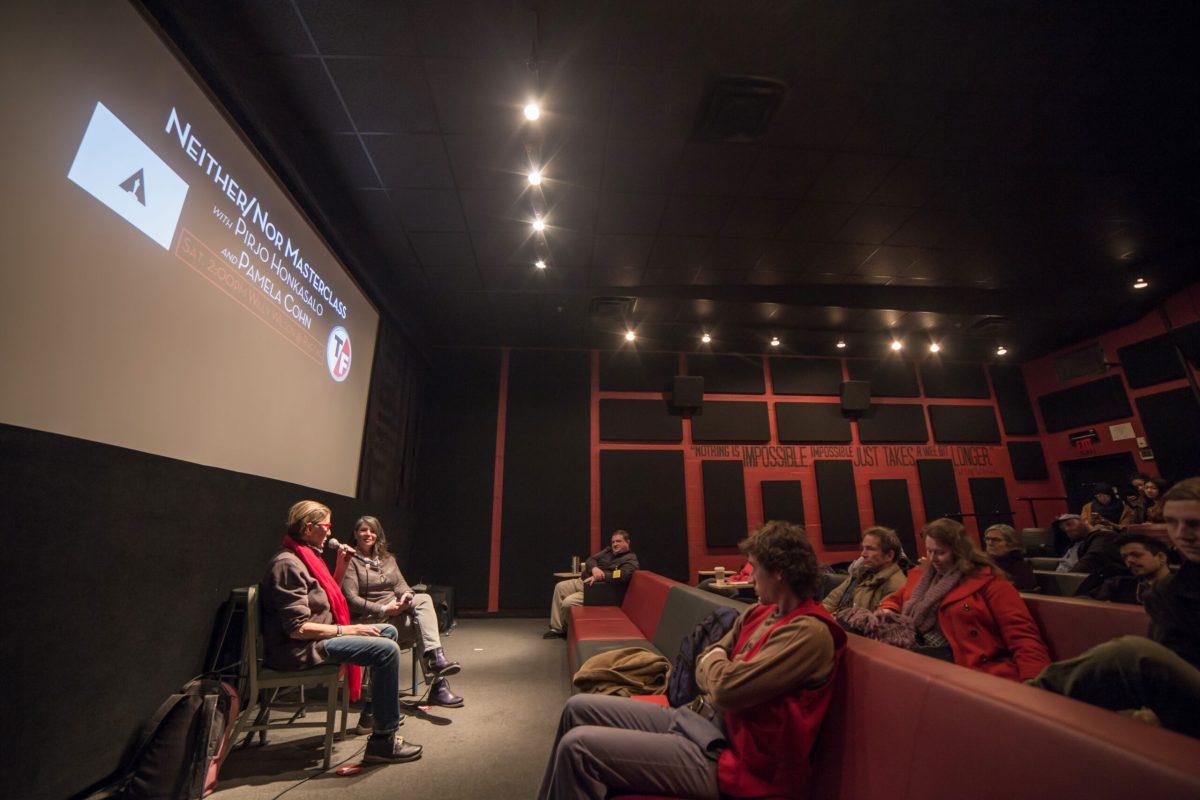
Every year, True/False Film Fest presents a series of films free to the public focused on a particular subject, called the Neither/Nor series. This year, the subject was director Pirjo Honkasalo. Her trilogy of films, “Mysterion,” “Atman” and “Tanjuska and the 7 Devils” were all part of a trilogy called “The Sacred and the Satanic,” focusing on religion and its impacts. “Mysterion” focused on a convent of nuns in Russia, “Atman” followed a paralyzed Hindu man on his journey to lay his mother’s soul to rest and “Tanjuska and the 7 Devils” showed a young girl supposedly possessed with seven demons.
While each film was certainly artistic, none of them were particularly engaging. Perhaps it was the lack of subject matter, shoddy editing or simply the fact that I am not a big enough film buff, but overall, these documentaries were nothing short of disappointing. Maybe they were impressive for the ‘90s, when they each debuted, but they can no longer hold their own against the modern documentary craze and the fast-paced, story-driven quality of today’s films.
####“Mysterion”
The first documentary of the series, “Mysterion” certainly showed nuns as promised, but, unlike True/False’s online description, “transfixing” and “gentle” were not words I would use to describe it. As I fought past the urge to drift off, I found myself absolutely lost in the long and repetitive visuals. I wanted desperately to find some sort of storyline or narrative element, if only to summarize the film, but I couldn’t. For a while, it seemed to follow the story of a girl becoming a nun, but she was given so little screen time compared to drawn-out shots of nuns completing tasks that little pointed to her as the main character.
There were no interviews, save for a small sound bite at the beginning from this same girl, and no clues to suggest any context to the audience. I found myself wondering basic questions again and again, ones that could have been easily answered through any kind of narrative about what was going on, who the people involved were and why I as a viewer should care. My goal is to come away from documentaries having gained something, and here, I gained nothing other than a feeling of wasting 94 minutes of my life.
####“Atman”
“Atman” follows “Mysterion” in its glimpse into religion, but it focuses on a Hindu man who is paralyzed from the waist down on his pilgrimage to lay his mother’s soul and bones to rest. This already gives it a leg up on “Mysterion”: The film has a central character and a story built around him. However, the use of long and repetitive shots without context bogged down a very compelling storyline.
When the main character, Jamana Lal, was onscreen, the film served a purpose in showing what lengths a man would go to to ensure his mother was properly laid to rest. This could have created a fascinating and poignant documentary had the director chosen to retain this focal point in her editing and narrative. Instead, she used the same lengthy and ultimately unnecessary shots that made “Mysterion” so tedious.
Lost in the story, unable to keep track of what was going on, I found it clear that the director had simply sacrificed some of the information for artisticness. I found myself frustrated by how little character-driven plot existed despite all the tools the director needed being right there.
####“Tanjuska and the 7 Devils”
As is evident in its title, “Tanjuska and the 7 Devils” focuses on the Satanic part of “The Sacred and the Satanic.” The film looked at the life of a young girl named Tanjuska and her parents’ attempts to heal her by taking her first to hospitals, then to local healers and finally to an exorcist named Father Vasili. Although there are no movie-style exorcisms performed on camera, this film finally offers a pointed look at an issue with a clear story to back it up, making it easily the best and most engaging of the trilogy.
The story of Tanjuska is harrowing: she was diagnosed with schizophrenia in one of the psychiatric hospitals she stayed in, but the doctors never told her parents this, perhaps feeding into their fears that their daughter may be possessed. She is separated from her mother and sister to live inside Father Vasili’s compound, shouted at for having demons inside her and threatened daily by her own father’s belt. She is misunderstood by everyone around her, and it’s painful to watch a child so obviously mentally ill be treated in such terrible ways.
The biggest difference between this installment and the others was this one’s use of interviews and narration to provide context and information about what’s happening, making me feel much more interested in the story since I could wonder about more complex issues taking place. However, the director actually went overboard with some of the narration in this movie. She featured long, uninterrupted clips of subjects just talking at a camera that didn’t always provide necessary information.
Besides these repeated issues, though, “Tanjuska and the 7 Devils” provided a very real and intimate glimpse into the world of this girl and the how religion failed her, making me hurt for her and actually engage in the story. I’m not sure I would jump at an opportunity to see this film again, but if it was a question of this one or the others, there is no doubt in my mind that this would be the film I saw.
_Edited by Janae McKenzie | [email protected]_